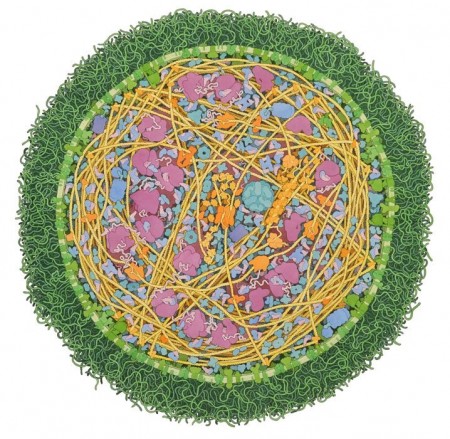Illustration by David S. Goodsell, the Scripps Research Institute
This amazing watercolour painting shows an entire Mycoplasma mycoides cell, a bacterium that causes lung disease in cows, is painted with a brilliant green membrane that brings grass to mind. Inside, bright yellow DNA curls next to protein-builders in purple and blue. In life, this bacterium is about 250 nanometres in diameter. Click on the link to identify the membrane proteins, enzymes and other protein synthesis organelles. How beautiful is this?!

